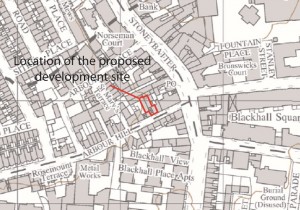2014:131 - DUBLIN 7: 3 Arbour Hill, Stoneybatter, Dublin
County: Dublin
Site name: DUBLIN 7: 3 Arbour Hill, Stoneybatter
Sites and Monuments Record No.: N/A
Licence number: 14E226
Author: Steven McGlade, Aileach Archaeology, on behalf of Archaeology Plan
Author/Organisation Address: 32 Fitzwilliam Place, Dublin 2
Site type: No archaeology found
Period/Dating: N/A
ITM: E 714350m, N 734715m
Latitude, Longitude (decimal degrees): 53.350278, -6.282460
A programme of test-trenching was conducted at No. 3 Arbour Hill, Dublin prior to renovation and construction works on the site. Two layers of late-19th–early-20th-century build-up material were identified levelling the slope of the eastern side of the yard up to make a flat surface for the existing yard. No features of an archaeological nature were identified during the test-trenching programme.

